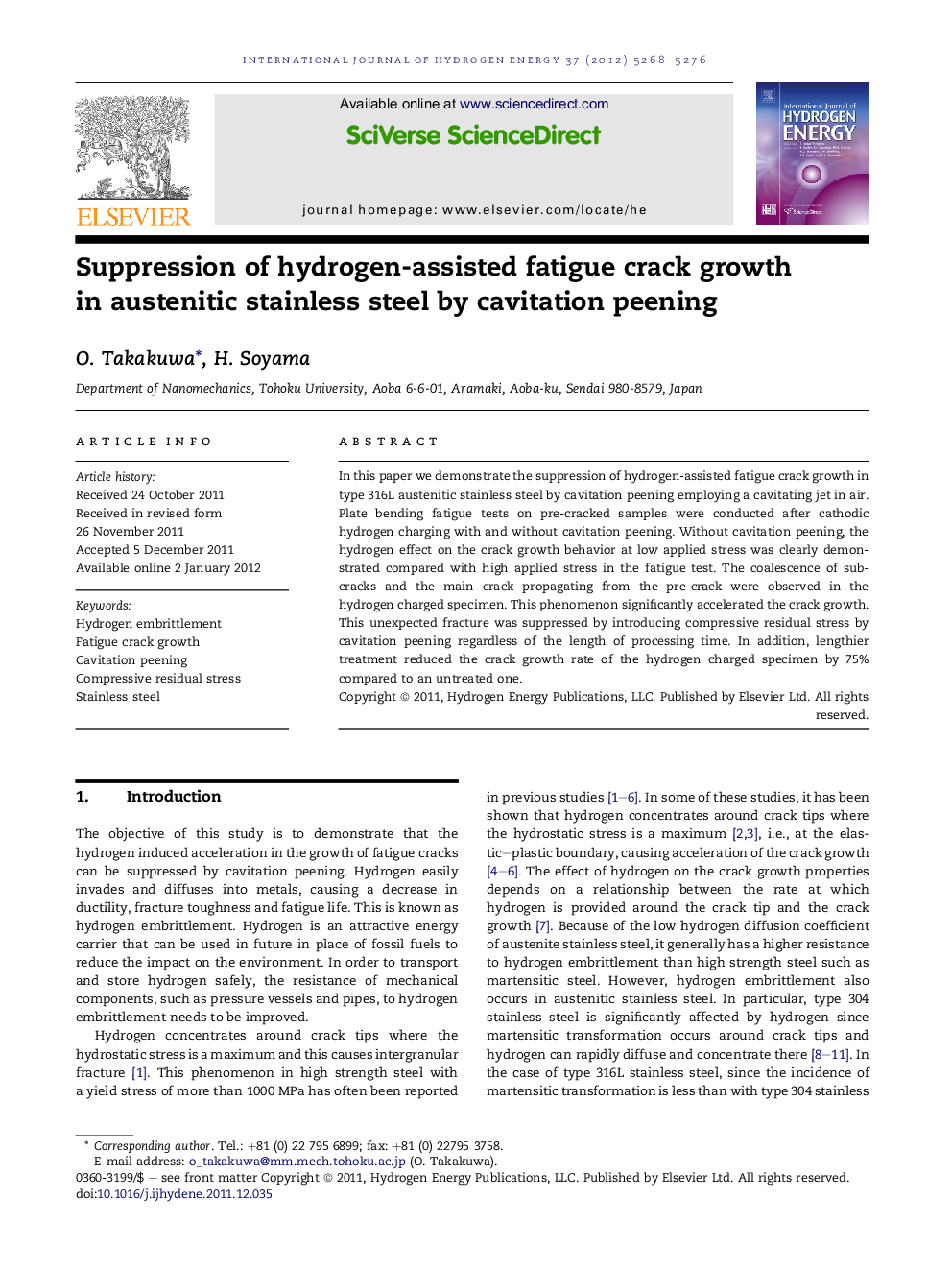| Article ID | Journal | Published Year | Pages | File Type |
|---|---|---|---|---|
| 1271547 | International Journal of Hydrogen Energy | 2012 | 9 Pages |
In this paper we demonstrate the suppression of hydrogen-assisted fatigue crack growth in type 316L austenitic stainless steel by cavitation peening employing a cavitating jet in air. Plate bending fatigue tests on pre-cracked samples were conducted after cathodic hydrogen charging with and without cavitation peening. Without cavitation peening, the hydrogen effect on the crack growth behavior at low applied stress was clearly demonstrated compared with high applied stress in the fatigue test. The coalescence of sub-cracks and the main crack propagating from the pre-crack were observed in the hydrogen charged specimen. This phenomenon significantly accelerated the crack growth. This unexpected fracture was suppressed by introducing compressive residual stress by cavitation peening regardless of the length of processing time. In addition, lengthier treatment reduced the crack growth rate of the hydrogen charged specimen by 75% compared to an untreated one.
Graphical abstractFigure optionsDownload full-size imageDownload as PowerPoint slideHighlights► Hydrogen-assisted fatigue crack growth could be suppressed by cavitation peening. ► The applied stress affected hydrogen effect on the crack growth behavior in not-treated material. ► The crack growth rate of hydrogen charged material was reduced by 75% by cavitation peening.
